Latin name: Aspidistra
Category: perennial herbaceous plant
Origin: Japan, China, Himalayas
Aspidistra - Spartan fusion of cast iron and emeralds
Aspidistra (Aspidistra) is located in the Asparagus family. A separate genus is composed of hundreds of varieties of crops, which are stemless evergreen herbaceous perennials.
With its original and unusual name, this attractive, delicate and at the same time Spartan plant should be grateful to the British botanist John Ker Goler, which he assigned to him in one thousand eight hundred and twenty-two.
According to botanical canons, when translated from ancient Greek mythology, the name of the plant means "aspis" - a shield and "Astron" - a star. This interpretation is given for the similarity of the inflorescence with an asterisk, and the leaves are very similar to a shield. "Friendly family" as craftsmen called the aspidistra for its unique and original appearance of the bush. After all, leaf blades are friendly and plump, consistently growing one after another, creating a very attractive plant creature. “Shoemaker’s Palm” is the name given to aspidistra in European countries, and in England this miracle has its own name - a cast-iron tree.
A clear translation of the name aspidistra can be voiced as "pointer to snakes." In natural forest conditions, it was determined by the quality of the leaves to slightly oscillate and rustle when moving next to the plant of crawling poisonous vipers, which also fell in love with it and its neighborhood is pleasant. In addition, the roots of the aspidistra look like a snake, which also influenced the name of the flower.
Aspidistra considers the tropical forests of Southeast Asia to be its homeland. Here in China, Japan, the Himalayas, this ancient unique plant feels great, reaching a height of up to one meter, in mountainous areas with subtropical climatic conditions, from where it appeared in our territories.
To such ancient cultures, tenacious and unpretentious, the fern nephrolepis, chlorophytum can also be attributed.
After all, snake grass looks charming. The plant has a large creeping compacted rhizome with its partial placement above the soil surface.
Aspidistra has no stems.
Root cuttings are a springboard for the formation of smooth, elongated, lanceolate dark green leaf plates with a glossy sheen. Each leaf is presented with a long petiole, on which peculiar scales of small leaves are placed in the form of a protective layer. In length, the leaves reach fifty centimeters, and in width - up to fifteen centimeters. In height, the flower reaches eighty centimeters, and in nature - up to one meter.
How does the aspidistra bloom? The surface of the roots between the scales can be decorated with star-shaped axillary, not large, sessile purple or lilac flowers up to three centimeters in diameter, pleasing to the eye throughout the day. Under natural conditions, flowers are pollinated by slugs and insects crawling on the surface of the earth.
After flowering, a fruit with one grain is formed.
The indoor aspidistra flower has become extremely popular in cultural cultivation among flower lovers all over the globe. This wonderful, tender plant with beautiful leaves and at the same time hardy with a harsh character and metallic health does not require large expenses and attention. Beginners and lazy flower growers will like this flower. Aspidistra feels great in the interior of apartments, halls, living rooms with semi-dark conditions.
An extremely chic and spectacular friendly family will look in spacious office premises, planted in beautiful and stylish flowerpots. It will perfectly fit into the interior, help to improve the atmospheric performance in the workspace.
Aspidistra, a decorative leafy house plant, not only attracts flower growers with its beauty, but also improves both the home environment and workrooms with its beneficial properties. This culture is considered the best natural adsorbent. The indoor flower takes an active part in cleansing the airspace - it fights nicotine, dust, phenols. Indoor aspidistra releases specific substances into the atmosphere that have antibacterial effects. The unique ability to regulate the humidity of the environment, control the microclimate in the house, makes the aspidistra indispensable in the interior.
The kitchen will be an excellent territory for homemade snake grass, it will add its originality to the unique charm in the bedroom and transform the interior of the living room. Aspidistra are wonderful flowers for a child's room. The presence of this wonderful unpretentious deciduous houseplant helps the child become more attentive, stabilizes the child's psyche, and relieves memory problems.
A friendly family will not harm pets.
The cast-iron flower has gained fame as a super-universal plant. It is not only beautiful in landscaping various rooms, but also looks wonderful together with other plants in creating unique, bright and chic bouquets. Aspidistra in a bouquet is irresistible. Florists appreciate and admire its heightened aesthetic qualities, which help to give bouquets the desired shape, thanks to its harmonious combination with other interesting flowers such as roses, callas, asparagus, needles, anthurium.
And to the question: is aspidistra poisonous or not? It is safe to answer unequivocally - the plant is one hundred percent non-poisonous, and even medicinal. The healing properties of aspidistra have been used by residents of Asian countries since ancient times. Medicines that are made from the leaves of the plant can cure diseases of the stomach and intestines, lungs, women's diseases, cystitis, tonsillitis, tuberculosis, periodontal disease and other diseases. The medicinal properties of the juice have a very wide hemostatic, wound healing, disinfectant spectrum of action.
Aspidistra species
Aspidistra high (Aspidistra Elatior)
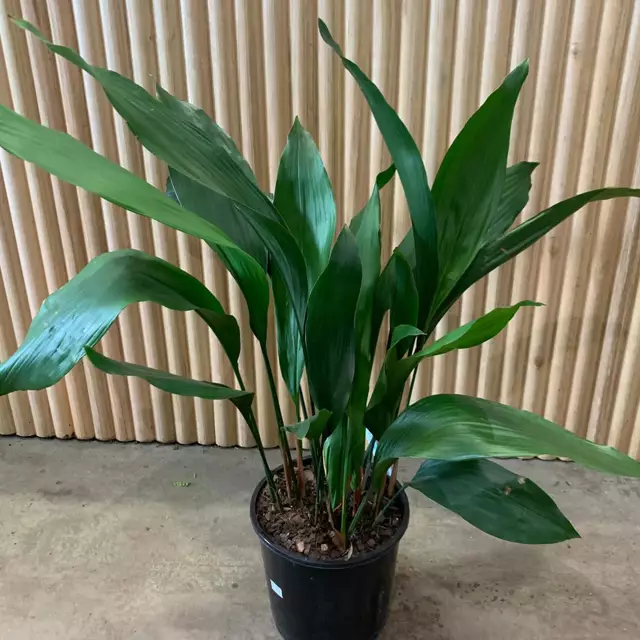 It owes its origin to the southern forest subtropical territories located in China and Japan. From the serpentine creeping root itself, the beauty of a herbaceous perennial is presented, formed by bright green shiny lanceolate or oval leaf plates on high petioles. They look like lily of the valley leaves, but with larger sizes. They can be up to half a meter long and fifteen centimeters wide.
It owes its origin to the southern forest subtropical territories located in China and Japan. From the serpentine creeping root itself, the beauty of a herbaceous perennial is presented, formed by bright green shiny lanceolate or oval leaf plates on high petioles. They look like lily of the valley leaves, but with larger sizes. They can be up to half a meter long and fifteen centimeters wide.
When growing, the plant looks like a lush fountain. Flowers on eight-lobed perianths have a crimson or brownish-yellow hue. After flowering, fruits appear in the form of a berry and a single seed. At home, flowering can be contemplated occasionally in the summer with small inflorescences of a purple-red hue.
Aspidistra Milky Way
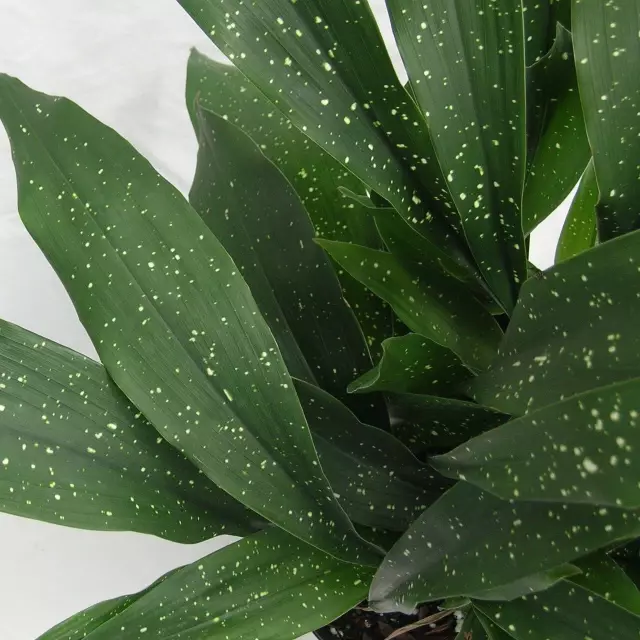 This drought-resistant, cold-resistant, slow-growing variety has dark green leaves with light spots on them, reminiscent of a starry sky. Thanks to this feature, the variety is called Aspidistra Milky Way. The upper height barrier can reach sixty centimeters. Flowering rarely pleases. At home, with the onset of spring, you can sometimes admire small purple flowers with pointed petals.
This drought-resistant, cold-resistant, slow-growing variety has dark green leaves with light spots on them, reminiscent of a starry sky. Thanks to this feature, the variety is called Aspidistra Milky Way. The upper height barrier can reach sixty centimeters. Flowering rarely pleases. At home, with the onset of spring, you can sometimes admire small purple flowers with pointed petals.
Aspidistra variegata
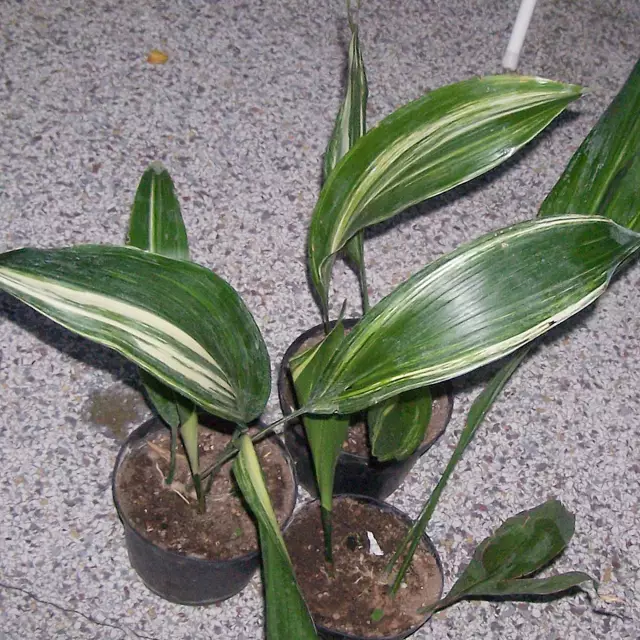 This variety is represented by a half-meter shrub that is very capricious and demanding on growing conditions. To achieve an attractive variegated aspidistra, it is necessary to provide it with a sufficient amount of lighting, maintain the desired humidity level, and regularly apply the necessary fertilizers. The result will be obvious. The leaf blades of well-groomed indoor aspidistras will be uniquely decorated with cream-colored vertical light stripes.
This variety is represented by a half-meter shrub that is very capricious and demanding on growing conditions. To achieve an attractive variegated aspidistra, it is necessary to provide it with a sufficient amount of lighting, maintain the desired humidity level, and regularly apply the necessary fertilizers. The result will be obvious. The leaf blades of well-groomed indoor aspidistras will be uniquely decorated with cream-colored vertical light stripes.
Aspidistra Attenuata
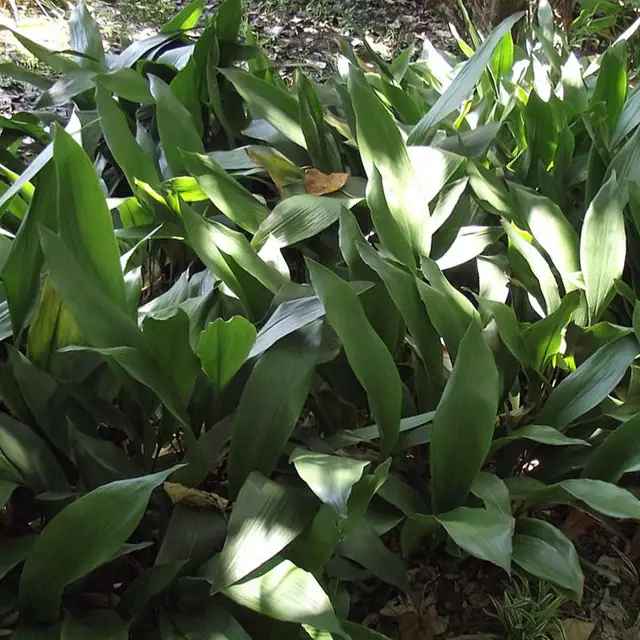 On thirty-centimeter petioles there are fifty-centimeter leaves, decorated with a huge number of small white dots. These unpretentious indoor plants feel great in cool areas and with a strong gas content in the air space. With age, they grow well and turn into interesting lush bushes. With the onset of summer heat, Aspidistra Attenuata can indulge in small purple flowers, reaching thirty centimeters in diameter.
On thirty-centimeter petioles there are fifty-centimeter leaves, decorated with a huge number of small white dots. These unpretentious indoor plants feel great in cool areas and with a strong gas content in the air space. With age, they grow well and turn into interesting lush bushes. With the onset of summer heat, Aspidistra Attenuata can indulge in small purple flowers, reaching thirty centimeters in diameter.
Aspidistra grandiflora
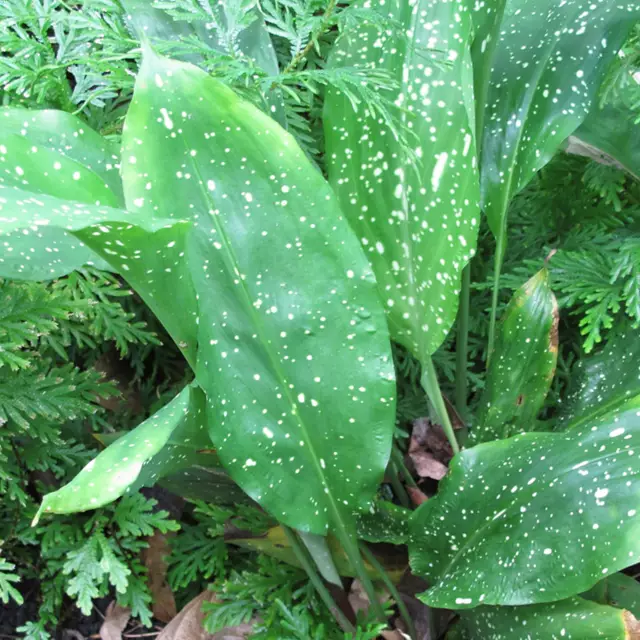 The popularity of this interesting species of aspidistra, recently discovered in Vietnam, is growing exponentially among flower lovers. Its uniqueness lies in the oval configuration of spotted leaves up to eighty centimeters long and large five-centimeter flowers with long petals of purple-pink colors, resembling the legs of a spider. Aspidistra flowering at home is a rare phenomenon, but real in the summer. A grown plant does not become a lush shrub.
The popularity of this interesting species of aspidistra, recently discovered in Vietnam, is growing exponentially among flower lovers. Its uniqueness lies in the oval configuration of spotted leaves up to eighty centimeters long and large five-centimeter flowers with long petals of purple-pink colors, resembling the legs of a spider. Aspidistra flowering at home is a rare phenomenon, but real in the summer. A grown plant does not become a lush shrub.
Sichuan aspidistra (Aspidistra sichuanensis)
 The homeland of the flower is considered to be the Chinese highlands with bamboo thickets. The plant has strong, powerful, creeping rhizomes with separately growing leaves, reaching a height of seventy-five centimeters. Leaf blades of dark green color reach thirty centimeters in length and eight centimeters in width. Sometimes the leaves have spotty blotches or arcuate longitudinal stripes.
The homeland of the flower is considered to be the Chinese highlands with bamboo thickets. The plant has strong, powerful, creeping rhizomes with separately growing leaves, reaching a height of seventy-five centimeters. Leaf blades of dark green color reach thirty centimeters in length and eight centimeters in width. Sometimes the leaves have spotty blotches or arcuate longitudinal stripes.
Aspidistra home care
Growing an unpretentious deciduous houseplant aspidistra in your own apartment is absolutely not problematic, and this task is within the power of a novice and overly busy grower. The main thing is to love your slow-growing, strong pet with a cast-iron character and fulfill his desires and requirements. And then specifically on the points.
Choice of location and temperature
Most varieties of aspidistra are shade-loving houseplants. They will feel great on the windows of the northern orientation or near them. This unique plant in the depths of the room will not only feel great, but also decorate the interior of this territory. Variegated varieties desire better lighting to maintain bright, beautiful and showy patterns that can lose their appeal in the dark.
Direct burning sunlight is contraindicated for aspidistra.
The optimal summer temperatures for aspidistra will be 20 ° C-25 ° C, and in winter the houseplant will feel great with a temperature of about 15 ° C, and can adapt to lower rates. In the warm off-season, the aspidistra can happily voyage towards the balcony, veranda, shady corner in the garden.
Keep aspidistra away from windy areas.
Humidity and watering
Humidity for room aspidistra should be moderate. She also feels good in a dry atmosphere, even with the heaters turned on. The flower will not refuse spraying with a frequency of seven days, as well as wet wiping the leaf plates with clean water without impurities to remove excess dirt and improve its quality.
The watering mode is regulated by the state of the substrate in the flowerpot. It should be slightly dry on top. In the warm off-season, the amplitude of watering will be from two or three waterings per week, and in the cold period - at intervals of seven to ten days. The procedure is carried out with necessarily settled water, in which there are no mineral elements and salts.
Soil and its top dressing
A ready-made universal soil mixture intended for bulbous crops with impurities of nitrogenous compounds is easily purchased at flower shops. If the density of the soil goes off scale, its air permeability can be changed by adding sand or peat with perlite to the composition. The self-composed soil will include garden soil, coarse sand or perlite, peat or humus. All ingredients must be taken in equal proportions.
Aspidistra does not need abundant feeding, especially specimens with variegated leaves, which are not at all desirable to feed. In the warm off-season, once a month, the plant claims to be fed with universal soluble nitrogen-containing compounds, taken at half the dosage indicated on the label.
Aspidistra transplant
The fragile roots of aspidistra are not at all ready for frequent transplants. This procedure is performed according to the filling of the entire volume of the flowerpot with roots, they can be seen in the drainage holes. We transplant in the spring by transshipment with an interval of three years.
A thick layer of drainage is required. You can use expanded clay, pebbles.
Aspidistra leaf propagation
You can easily get a brand new young plant from an adult leaf on a seven-centimeter petiole, or cut off a leaf, but with its fleshy area preserved near the base. We dry the place of cutting and install it in a tall vessel with water, covering the hole with a film in order to block the access of air. Keep in a bright and warm place until the roots appear. We plant a young seedling in an inpidual flowerpot for better survival, you can create the conditions of a mini-greenhouse.
Aspidistra can be diluted during spring transplantation by piding the bush.
Pests and diseases
Only with big mistakes made, a hardy and strong cast-iron flower can acquire uninvited guests: scale insects, mealybugs or spider mites. If this misunderstanding is detected, treatment with a soap solution is necessary, followed by a shower. If this procedure is not enough to use insecticidal preparations in the form of acaricides and pesticides, you can use Aktellik, Fitoverm, Kleschevit, Akarin.
Difficult Growing Moments
- The leaf plates were covered with brown spots - the flower was exposed to bright sunlight.
- The leaves dry up - the room is too hot, the plant wants spraying.
- The leaves wither - we control the watering regime.
- The color scheme of the leaves changes - the plant lacks light and too much top dressing.
- The friendly family has slowed down its growth too much, there are no young shoots - the house plant lacks nitrogen compounds in the soil. We quickly and effectively correct this deficiency with urea. One gram of the drug per liter of water and water the plant.
ASPIDISTRA SIGNS AND SUPERSTITIES
This cast-iron flower, like other asparagus indoor plants, is not without folk signs. A presented flower will help its owner in strengthening character and tempering willpower, getting rid of depressive states and melancholy. A person becomes stronger, persistent, enduring, self-confident.
Give your cast-iron plant more attention, love, and you will be the owner of an excellent chic green oasis, which only residents of tropical territories contemplate.
There is an opportunity to get acquainted with other interesting indoor plants alphabetically on the site by opening the catalog of indoor plants from a to z.




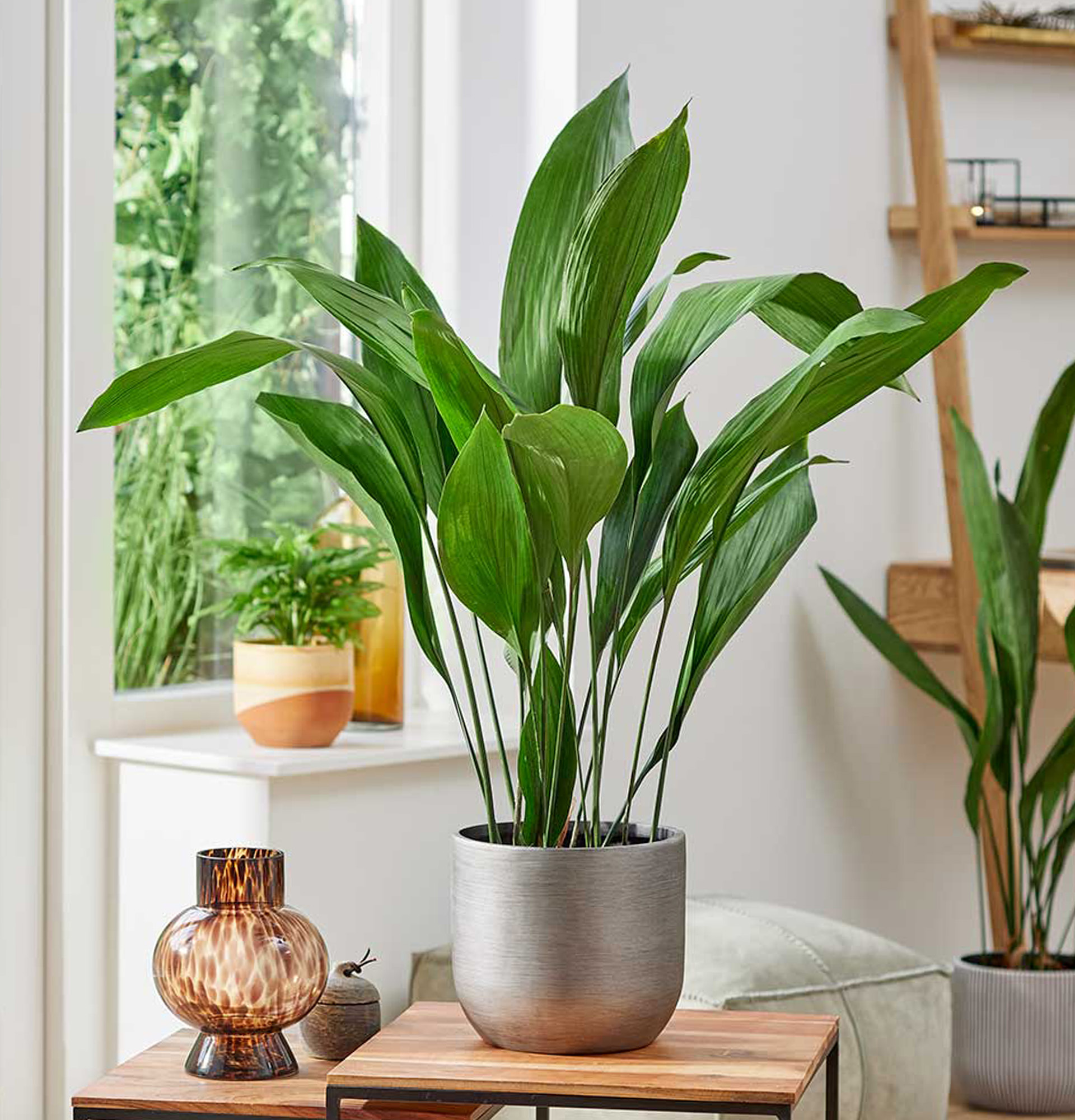










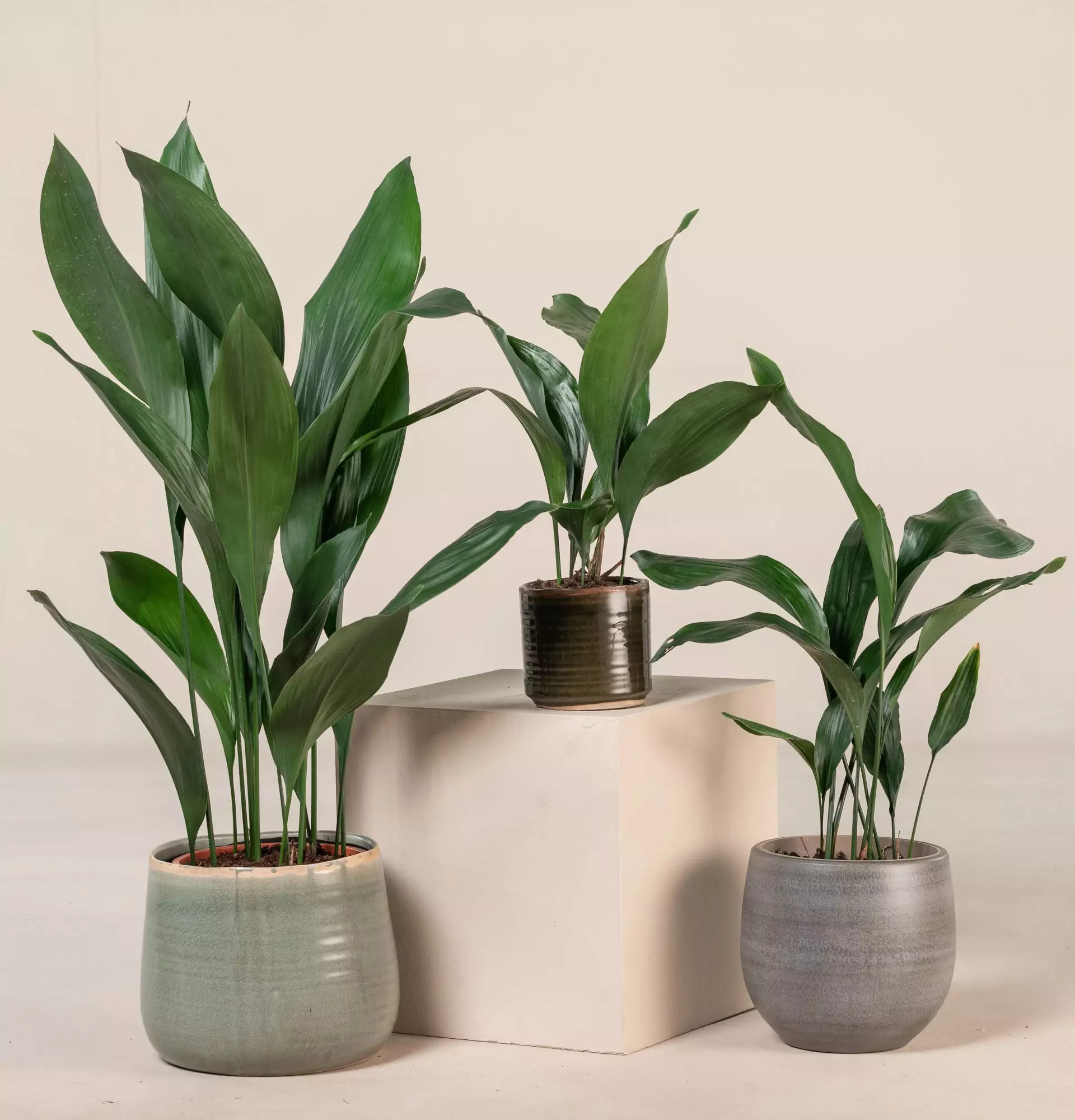

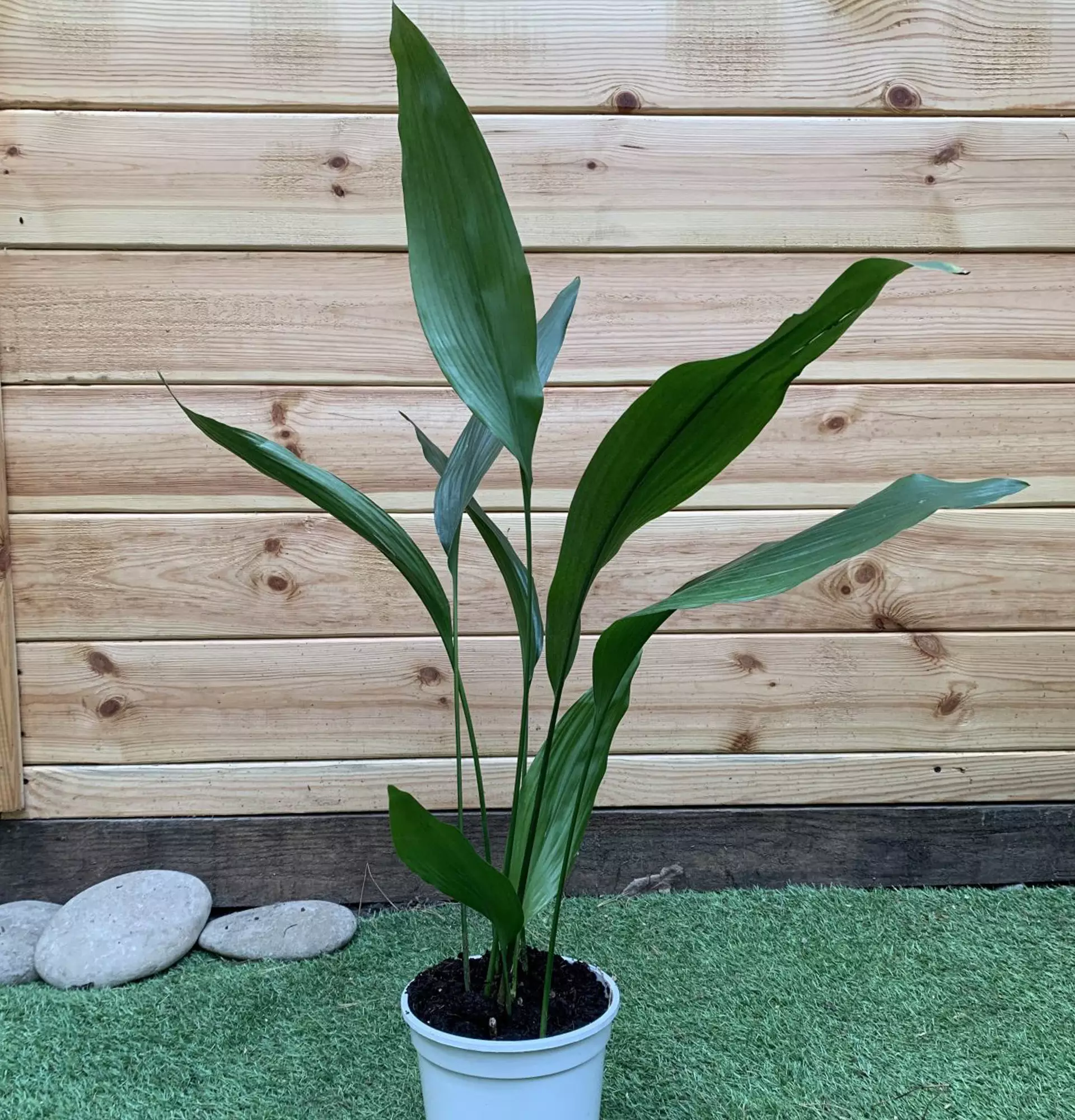
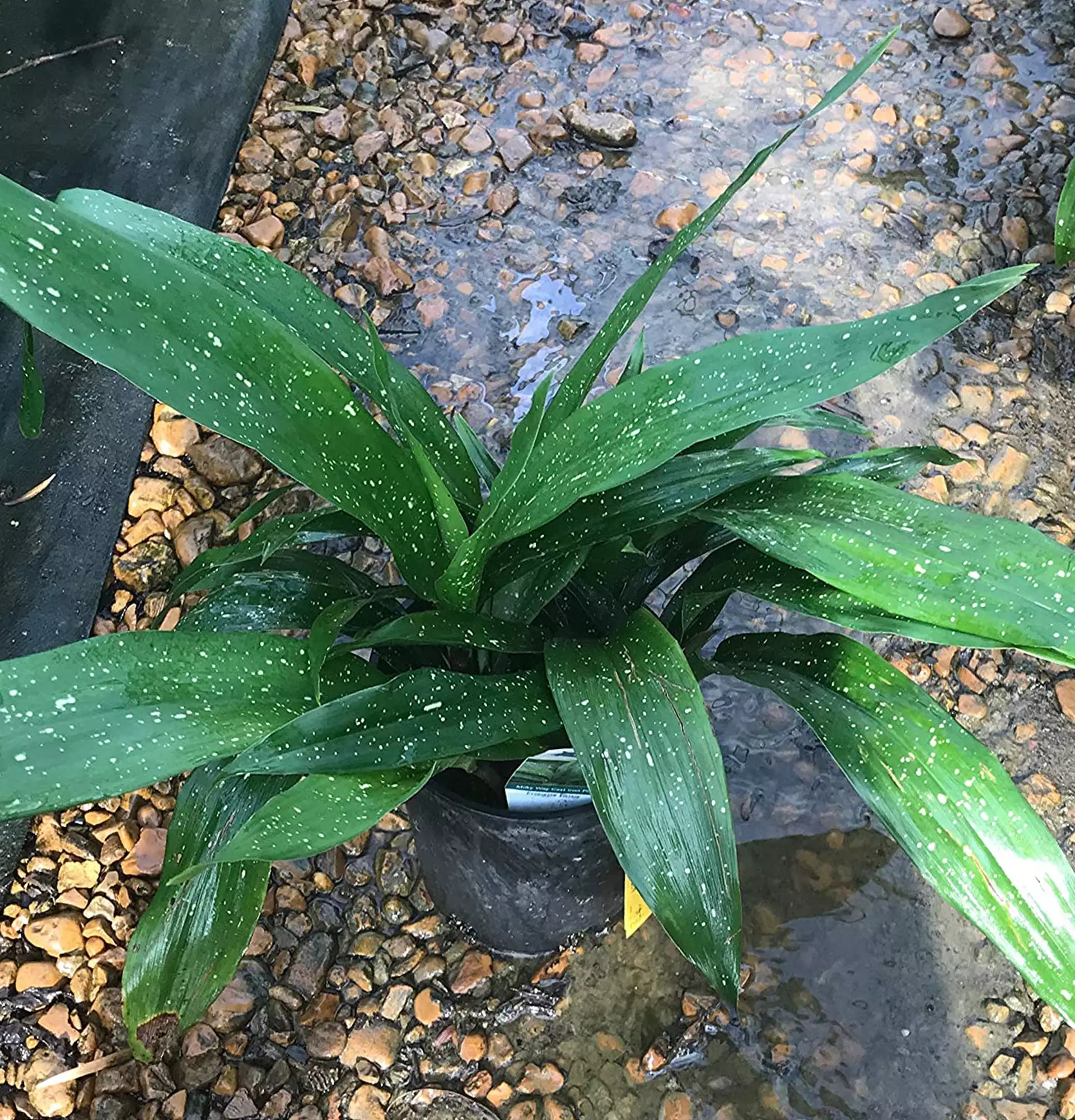

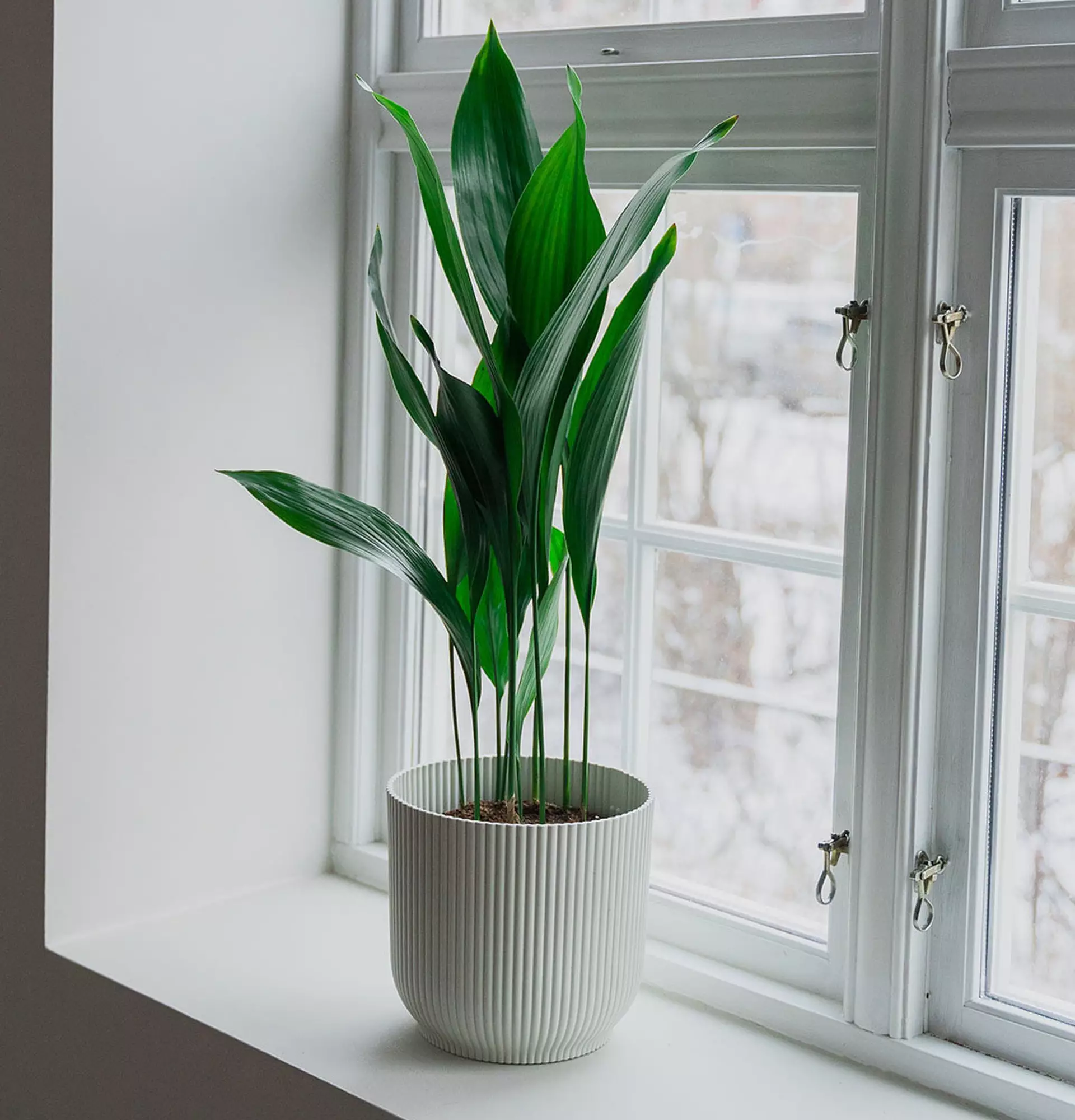

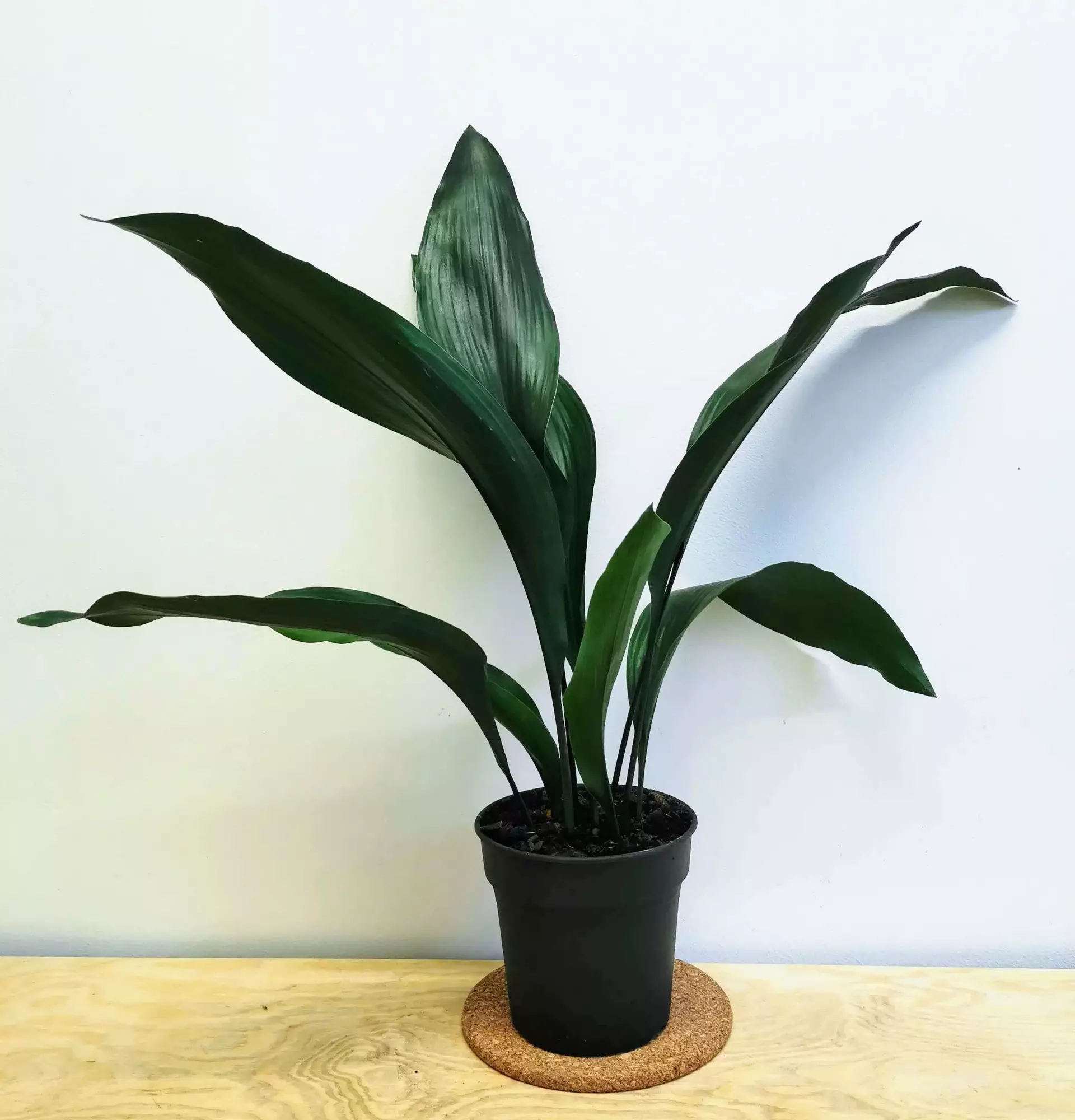

Write comments
Comments